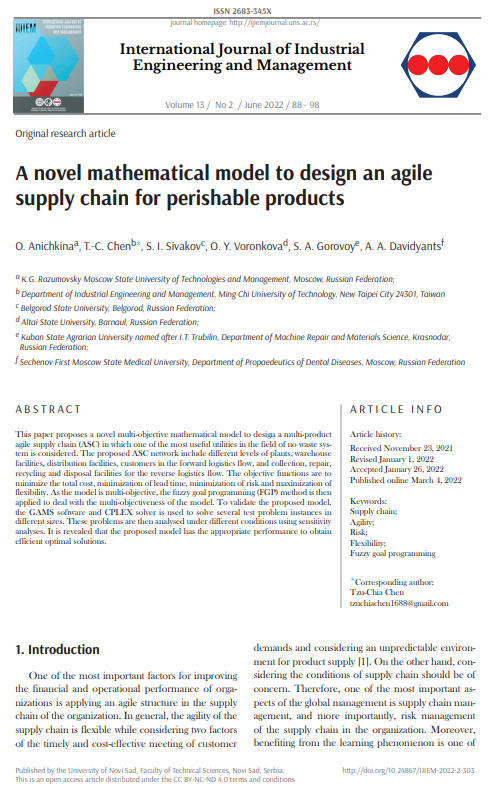A Novel Mathematical Model To Design an Agile Supply Chain for Perishable Products

Published 2022-06-30
abstract views: 108 // FULL TEXT ARTICLE (PDF): 0
Keywords
- Supply chain,
- Agility,
- Risk,
- Flexibility,
- Fuzzy goal programming
How to Cite
Copyright (c) 2023 International Journal of Industrial Engineering and Management

This work is licensed under a Creative Commons Attribution 4.0 International License.
Abstract
This paper proposes a novel multi-objective mathematical model to design a multi-product agile supply chain (ASC) in which one of the most useful utilities in the field of no waste system is considered. The proposed ASC network include different levels of plants, warehouse facilities, distribution facilities, customers in the forward logistics flow, and collection, repair, recycling and disposal facilities for the reverse logistics flow. The objective functions are to minimize the total cost, minimization of lead time, minimization of risk and maximization of flexibility. As the model is multi-objective, the fuzzy goal programming (FGP) method is then applied to deal with the multi-objectiveness of the model. To validate the proposed model, the GAMS software and CPLEX solver is used to solve several test problem instances in different sizes. These problems are then analysed under different conditions using sensitivity analyses. It is revealed that the proposed model has the appropriate performance to obtain efficient optimal solutions.
Article history: Received (November 23, 2021); Revised (January 01, 2022); Accepted (January 26, 2022); Published online (March 4, 2022)

